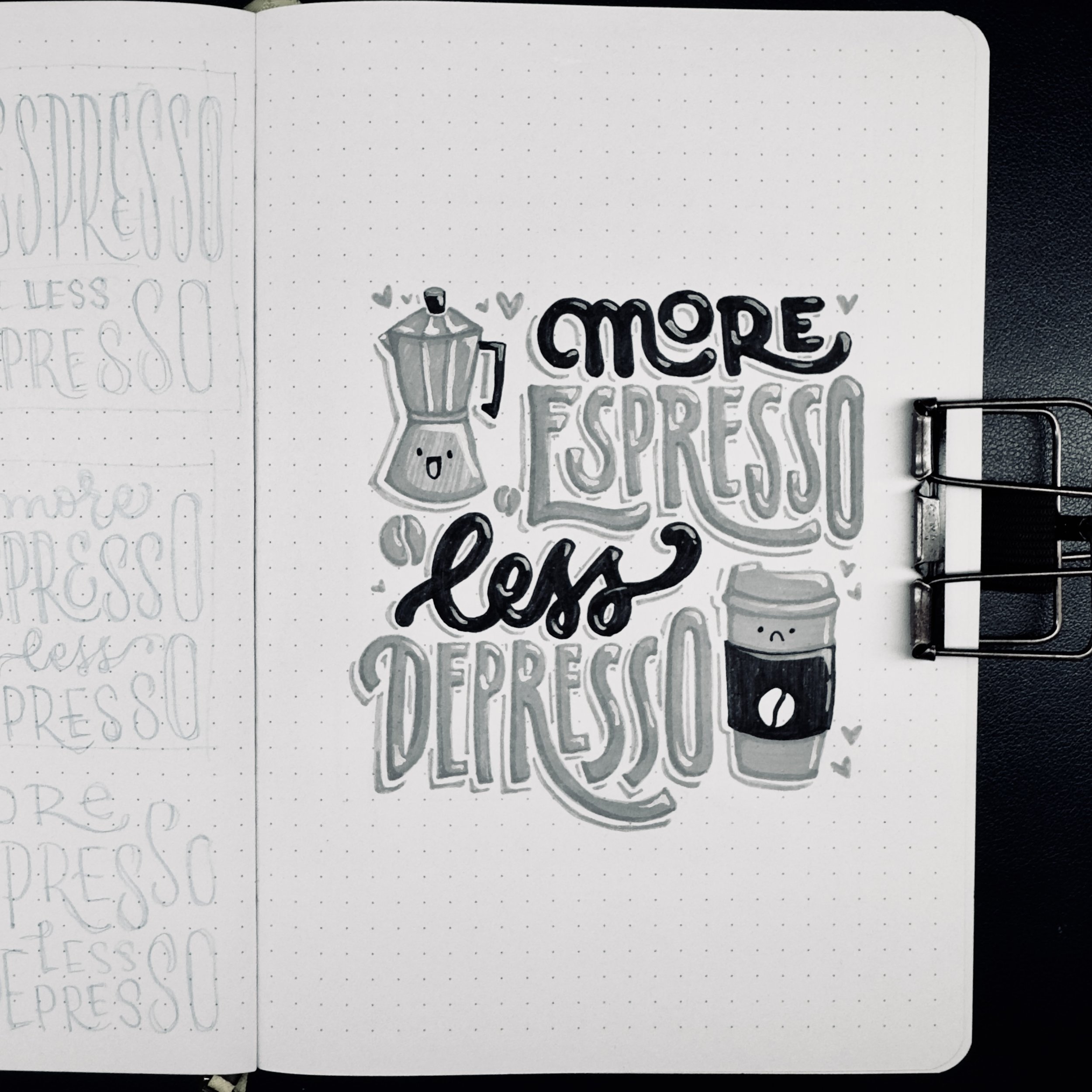Pencil First or Pen First?
If you’re anything like me, I generally always start off all my lettering pieces with a sketch, whether it’s pencil on paper or a sketch layer on Procreate. But is it always good to start with pencil? Is there anything to be said about starting with pen first? Today, we’ll talk about the pros and cons for both because depending on your project, your mood, or even how much coffee you’ve had, one approach might work better than the other.
Team Pencil-First
As I mentioned above, this is the method I use most often—especially when I’m planning a layout, trying something new, or lettering for a client. I just feel “safer” when I start with a pencil because …
Pros:
You get to plan out your spacing.
Which means fewer awkward “oh no, I ran out of room” moments. Or if you do run out of room, it’s very easy to erase and start over.Mistakes are no big deal.
Don’t like that loop? Erase it. Need to scoot a letter over? Easy. Pencil is my safety net.You can build your layout.
Guidelines, flourishes, bounce, hierarchy—it’s easier to experiment and refine before I commit.
But it’s not all sunshine and rainbows; there are still some …
Cons:
It’s a little slower.
If I’m just trying to warm up or make something quick, all that sketching can feel fussy. Let’s be honest, even though erasing is an option, it makes the whole process so much longer.It can make you overthink.
Sometimes the freedom to make endless changes actually gets in your way. What if I do this? What if I do that? Ugh, this is terrible, let me start over.Pencil smudges.
Need I say more? Especially if you're a lefty or working in a sketchbook. And sometimes the pencil lines don’t erase well, so the final product looks messier than intended.
Team Pen-First
Sometimes I just want to grab a pen and GO. Whether it’s for daily practice, loose styles, or social content—I love the energy of pen-first lettering.
Pros:
It builds confidence.
No do-overs. No safety net. Just me and the pen. It forces me to commit and trust my hand.It helps me develop new styles.
When you don’t obsess over every curve, your natural letterforms start to shine through. Less overthinking to be had!It’s fast and fun.
Great for warm-ups, casual pieces, or when you want to loosen up your style. Also when you’re stuck in a rut and need to experiment!
Cons:
Mistakes are permanent.
This is the main one. There are no do-overs. One weird stroke and… well, now that O looks like a Q and we’re living with it (but that’s honestly ok!).It’s not ideal for complex layouts.
If your piece has overlapping elements, multiple styles, or needs tight spacing, pen-first can get messy fast.It’s easier to make real wonky letters unintentionally.
Pen-first works best when your muscle memory is strong and consistent, so like I mentioned in my previous post, we all gotta practice practice practice. Although, to be honest, I don’t think of this as a con. You might create a style you actually do like and want to incorporate into your future lettering.
So… Which One Should You Use?
Honestly? Both.
Try pencil-first when:
You're designing a complex piece. Especially when you’re doing multiple thumbnails.
You want more control
You're experimenting with layouts and creating thumbnails
Try pen-first when:
You’re practicing or warming up
You want to explore your natural style
You’re just having fun (which is a great way to practice)
Final Thoughts
Whether you’re Team Pencil or Team Pen, the most important thing is to keep creating. Don’t get stuck worrying about doing it “right.” What matters is that you’re showing up, experimenting, and learning what works for you.
Now go letter something. With whatever tool makes you happy.
But if you’ve never lettered with a pen first, I highly recommend you give it a go. It might not be to your liking, but the more you do it, the better it’ll get. You might even discover new styles you hadn’t thought of before!




